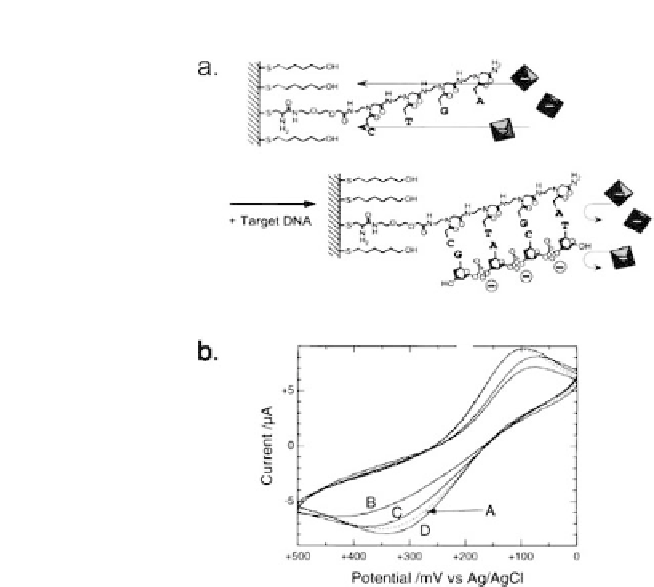Biology Reference
In-Depth Information
Figure 7.6.
(a) Working principle of sensor for oligonucleotides based
on the PNA probe immobilized on gold electrodes. Electrostatic repulsion
betweenthenegativelychargedmarker(representedasanoctahedron)and
the PNA/DNA duplexes at the electrode surface hinders the redox reaction
of the marker. (b) Cyclic voltammograms of [Fe(CN)
6
]
4
−
/
3
−
measured
with the gold electrode modified with a mixed monolayer of PNA probe
and 6-mercapto-1-hexanol before (A, dashed line) and after incubation
in a solution of 100 mM one-base mismatch oligonucleotide at room
temperature (B), 37
◦
C (C), and 47
◦
C (D) for 40 min. H. Aoki, P. Buhlmann,
and Y. Umezawa, Electrochemical detection of a one-base mismatch in
an oligonucleotides using ion-channel sensors with self-assembled PNA
monolayers,
Electroanalysis
, 2000,
12
, 1272-1276. Copyright Wiley-VCH
Verlag GmbH& Co. KGaA. Reproduced with permission.
allowed for discrimination against complementary and four-base
mismatch DNA. An interesting reagentless PNA-based sensor was
reportedbyReisberg
et al.
[60].Theworkingprincipleofthesensor
issummarized in Fig. 7.7.








